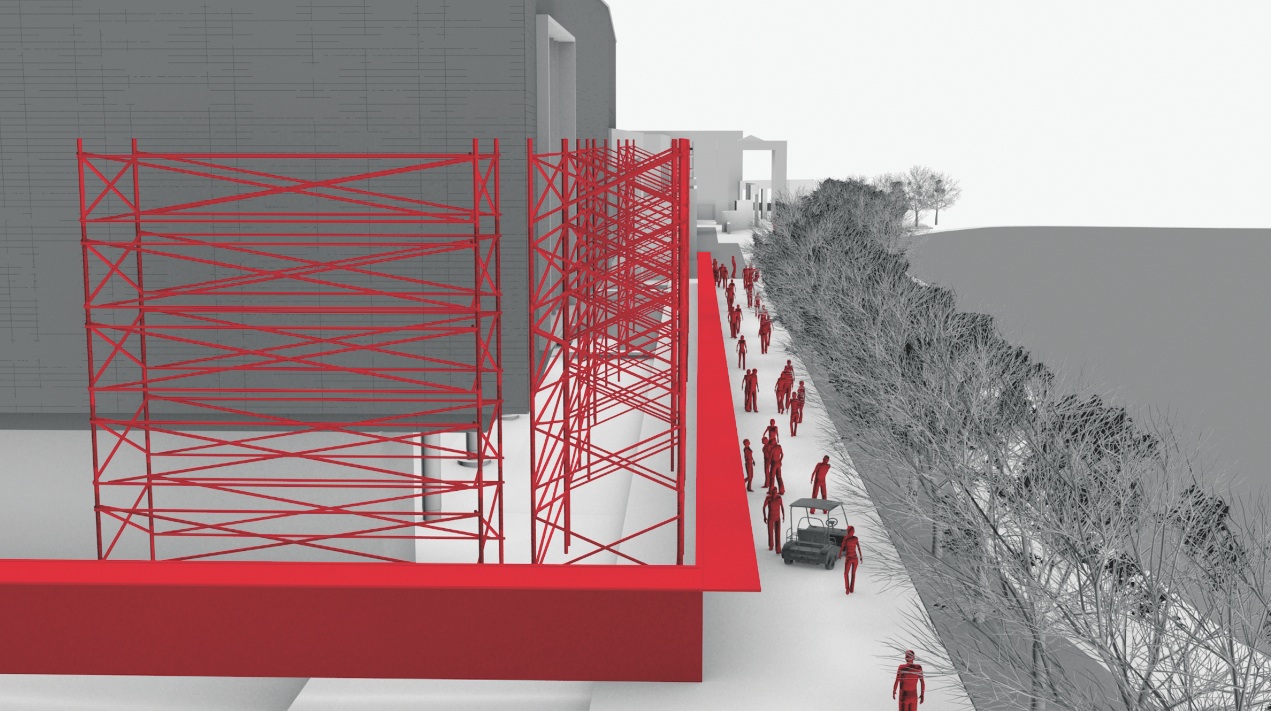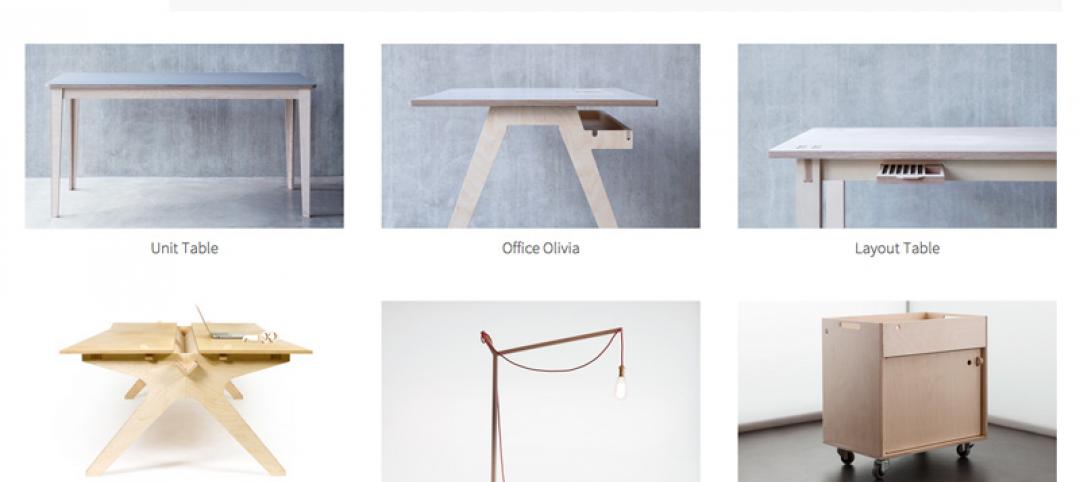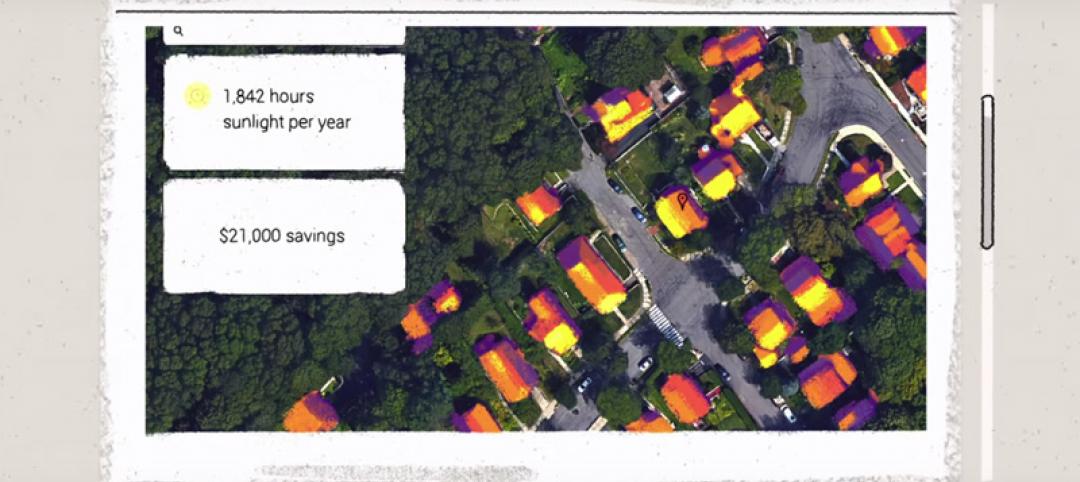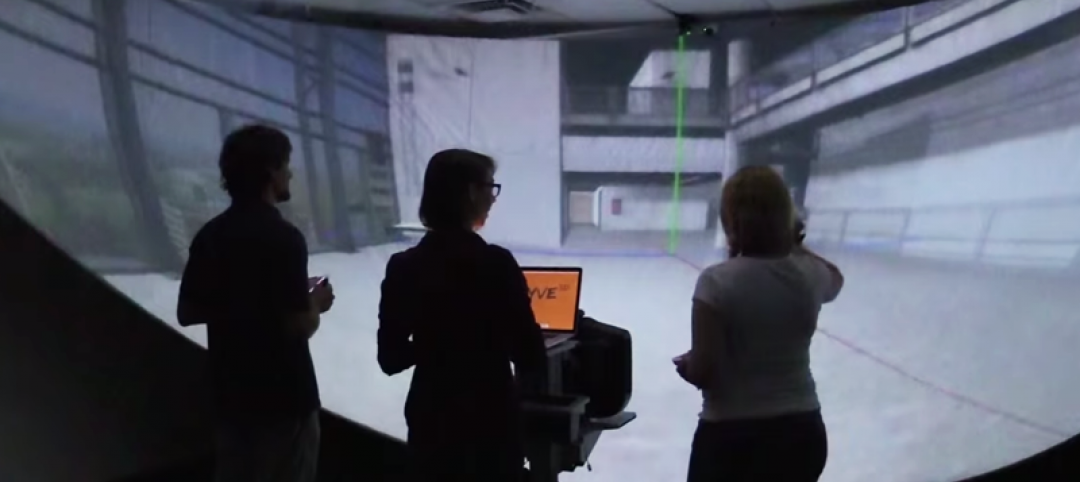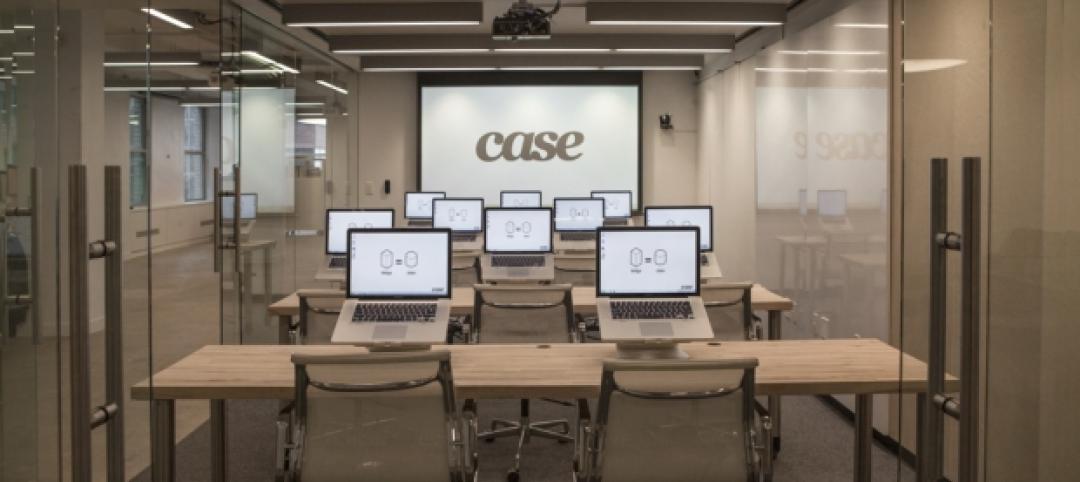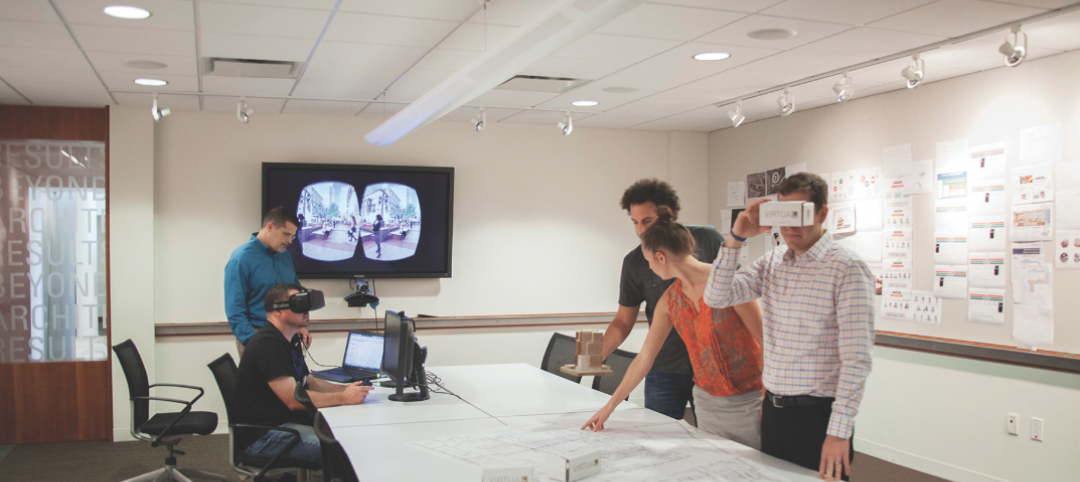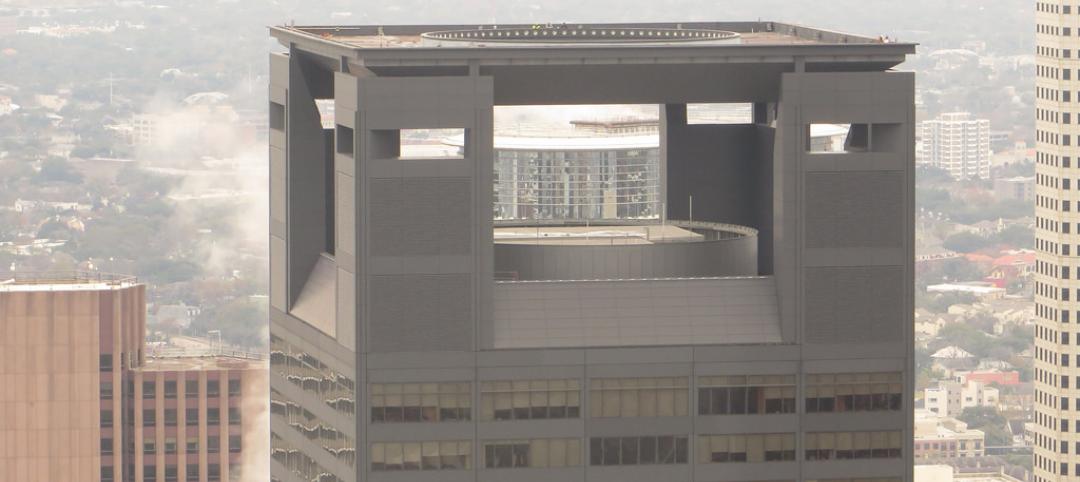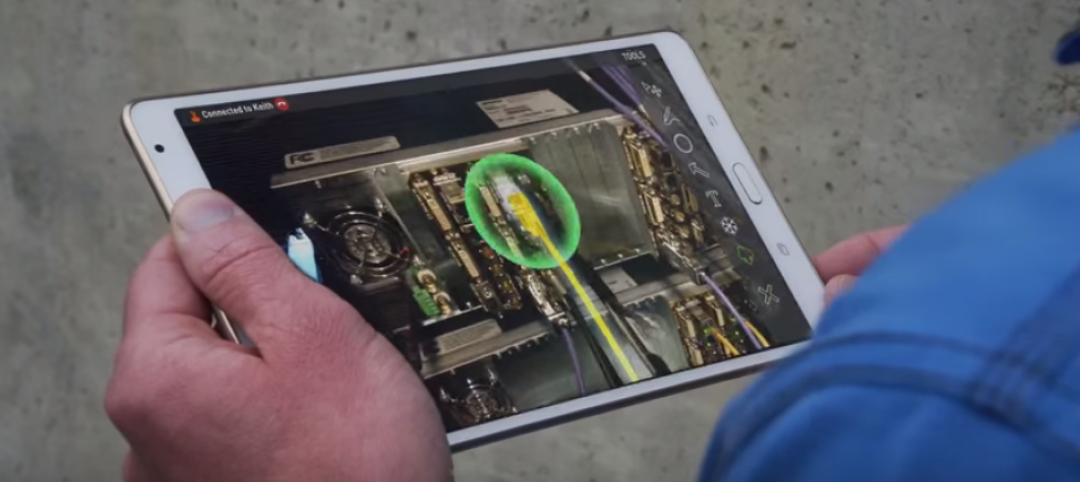In early 2008, as a storm approached northern Michigan, a 19-year-old construction worker raced to the rooftop of a multifamily building to clear the area of construction debris. Unaware that a metal roof curb—which was not secured or labeled—was covering a make-up air shaft, the worker tried to move the curb onto a stack of plywood. He fell through the roof opening 69 feet to his death.
In late 2009, in Washington state, a 45-year-old carpet installer was unloading 12-foot-long carpet rolls from a skip box through a window onto the fourth floor of a hotel project. With one foot on the window sill and the other on a roll of carpet protruding from the skip box, the laborer, who was not wearing fall protection, slipped and fell 32 feet to the concrete sidewalk below, causing fatal injuries.
5 WAYS TO USE BIM/VDC COORDINATION TO PROMOTE SAFETY
1. Prefabrication—Moving work to a warehouse environment greatly reduces the risk of slips, trips, falls, and soft-tissue injuries.
2. Safety hazards analysis—Firms are using software tools to quickly scan BIM models for problem areas, such as floor and roof penetrations, and coordinate necessary safety provisions.
3. Site coordination—Advanced construction sequencing and dimensional analysis allow firms to better track and manage site logistics and layout.
4. Facilities O&M planning—With the BIM model serving as a virtual mockup, firms can work with facilities teams to optimize spaces for faster, safer maintenance tasks.
5. Day-to-day safety coordination—Safety managers can access the BIM model on the job site, helping to improve inspections and validate that safety provisions are being met.
Cases like these are all too common in the U.S. construction industry. Each year, the industry claims roughly 815 lives and accounts for more than 200,000 nonfatal injuries and illnesses, according to the Bureau of Labor Statistics.
A small but growing number of BIM/VDC and safety experts assert that the primary causes of job site injuries and fatalities—falls from roofs, ladders, and scaffolds; soft-tissue injuries from material handling; burns from hot work, such as welding—could be greatly minimized with advanced planning and coordination using BIM tools. The technology, they say, helps with preconstruction risk assessment of building projects and the day-to-day implementation of safety provisions on the job site. It also enables teams to utilize offsite prefabrication, preassembly, and other so-called “prevention through design” approaches.
“BIM-enabled prefabrication has allowed us to eliminate tens of thousands of excursions up ladders and lifts, and thousands of hours of hot work and general construction activities in ergonomically difficult situations,” says Tony O’Dea, Gilbane’s Director of Corporate Safety. “The most expensive source of worker’s comp is soft-tissue injuries, primarily related to material handling. Prefab gets trades off the site and into a safer, more ergonomic environment. It also gets materials and large equipment, such as scissor lifts, off the site.”
ASSIGNING OWNERSHIP OF JOB SITE SAFETY PROVISIONS
As part of its Preconstruction Safety Alignment and Risk Assessment program, Gilbane’s project teams, along with its Interdisciplinary Document Control Department, review project models to identify potential risks. Most teams also take part in a Lean strategy kickoff session, where opportunities for prevention through design, such as the use of prefab, are evaluated.
“After that, we make assignments of responsibility within the subcontractor agreements that will enforce our safety plan for the project,” says O’Dea.
Responsibility and enforcement are two of the biggest gaps in safety on construction sites, says John Tocci, Sr., CEO of Tocci Building Companies. His firm uses BIM model analysis to track obvious safety provisions like site conditions, perimeter protection elements, and hundreds of site exposures that “open up and close” during the course of a project, such as floor penetrations for elevator shafts and ductwork.
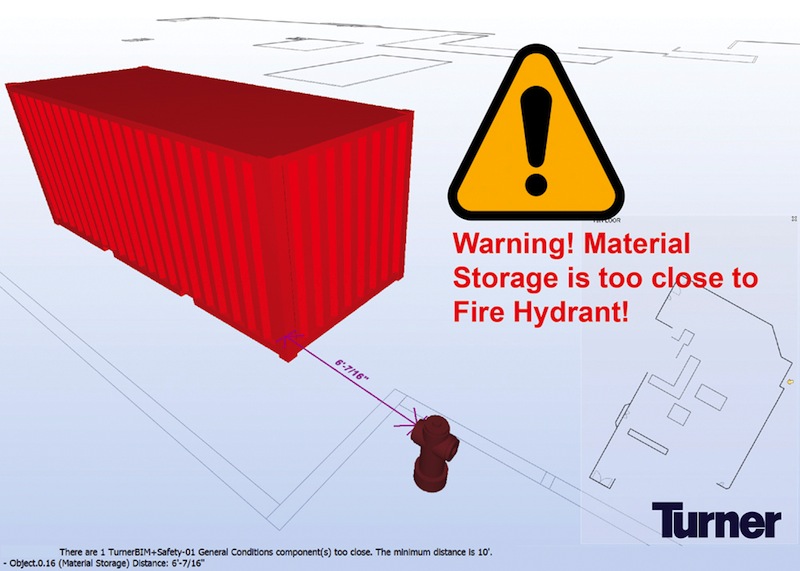 Turner Construction uses Solibri Model Checker software to write and apply custom rule sets to search for safety-related problem areas in BIM models, such as the location of fire extinguishers and material storage areas. Rendering: Turner Construction
Turner Construction uses Solibri Model Checker software to write and apply custom rule sets to search for safety-related problem areas in BIM models, such as the location of fire extinguishers and material storage areas. Rendering: Turner Construction
Tocci says that one reason it’s difficult to get an exposure protected is that there are disagreements that occur on the job site as to whose responsibility it is to provide the safety protection. BIM, he says, takes the guesswork and unknowns out of the equation. It allows project teams to perform day-to-day—even hour-to-hour—sequencing of projects to more accurately define temporary site exposures, including the window of time when each becomes a safety risk. Tocci’s project teams also use BIM to quantify the materials required to protect the area.
“When you define all of these parts and pieces, like floor opening coverings and fall protection provisions, they can be used in the purchasing and prequalification of major subcontractors and trade partners,” says Tocci. “People are prepared on a specific day with 30 sheets of three-quarter-inch plywood to cover 15 floor penetrations. There’s no arguing about who is responsible for executing the work. It just gets done.”
ADVANCED SAFETY MODEL CHECKING
Project teams using Turner Construction’s BIM-based safety checking initiative, which was launched in 2010, scan BIM models for 137 safety-related provisions across site conditions, excavation, substructure, and superstructure. The construction giant uses Solibri Model Checker software to write and apply custom rule sets to search for problem areas in BIM models.
“We’re validating items based on dimensional and informational relationships, such as the location and separation distance between fire extinguishers, the number of units per square feet of space, and the distance from hoists and egress stairs,” says Jennifer Downey, Turner’s National BIM Manager for Integrated Building Solutions. Downey offers other common safety check areas:
- Material storage locations, and their proximity to fire hydrants and adjacent structures
- Design criteria for the ramps on the site, including slope, landing distances at the top and bottom, and entrance and exit locations
- Location, size, and timeline of temporary job site hazards—floor penetrations, perimeter protection areas, etc.—and the materials required for protection
- Requirements for erosion and sedimentation control
- Equipment and egress requirements by phase
- Pedestrian protection measures
Once a project model is scanned and problem areas are identified, a safety analyst reviews the findings and produces colorful graphic reports that can be viewed directly in the BIM model or in an Excel-based report.
“With graphics-based reporting, there’s something really simple and tangible about seeing openings that don’t have edge protection or materials that are stored too close to a fire hydrant,” says Downey. “Each element is itemized so it can be reviewed quickly and checked off.”
Turner’s site safety modeling and checking program is just one piece in a broader strategy of using BIM to more comprehensively preplan safety and logistics tasks. Turner engineers leverage a variety of modeling and analysis tools—from Trimble SketchUp to Autodesk Revit to mobile apps—to mitigate risk and communicate more clearly with the entire project team.
PREVENTION THROUGH DESIGN
Specialty contractor Southland Industries is taking BIM-driven safety planning a step further by incorporating provisions and design features aimed at protecting the facilities operations and maintenance team. The company regularly incorporates “exclusion zones” in its project models to virtually block off areas that require regular maintenance. Southland’s engineers also optimize the design and layout of service aisles and interstitial spaces to eliminate potential hazards and simplify maintenance, says Joe Visgaitis, Southland’s Mid-Atlantic Division Safety Manager.
With the typical interstitial area, says Visgaitis, utilities crisscross through the space, forcing maintenance staff to climb over and duck under pipework and avoid hot pipes. “On a recent project, I told our team that I would like to be able to walk freely down the service aisle with a 32-inch-wide cart, and have key service areas within an arm’s reach of the main aisle,” he says.
SAFETY BUILT IN
Tocci says the next step in his company’s execution of BIM is to utilize the tool to eliminate falsework construction. “If you can avoid putting up scaffolding or staging on a project, you can save tens of thousands of dollars,” says Tocci. “It’s pure waste.”
The contractor recently worked on a reclad project that involved installing a glass curtain wall over an existing precast wall, with interstitial space and steel walkways in between. In the steel fabrication provisions, the firm included conditions to provide safety rails, safety cable, and safety catwalks right in the steel. “As the steel went up, the safety provisions went up with it,” says Tocci.
Related Stories
BIM and Information Technology | Aug 27, 2015
Zebra Imaging launches 3D hologram creator for Autodesk Revit
Company promises new product will bring "easy creation process" to holographic imaging in AEC community.
Office Buildings | Aug 24, 2015
British company OpenDesk offers open-sourced office furniture
Offices can “download” their furniture to be made locally, anywhere.
Energy Efficiency | Aug 24, 2015
Google develops Google Maps for solar energy
The tool offers high-resolution aerial maps, like the one used in Google Earth, to estimate the total sunlight a rooftop receives throughout the year.
Sponsored | BIM and Information Technology | Aug 20, 2015
Part II - Will BIM Work as a Deliverable? A Legal Perspective on BIM
Having the right counsel on your team can be the difference between long drawn-out negotiations and breaking new ground to meet the owner’s needs.
BIM and Information Technology | Aug 17, 2015
Reimagined cursors can change digital imaging
A University of Montreal professor has developed a system that elevates 2D cursors for a 3D world.
BIM and Information Technology | Aug 6, 2015
After refueling its capital tank, WeWork acquires BIM consultant Case
The merger is expected to help standardize how WeWork designs and builds out office space.
Giants 400 | Aug 6, 2015
BIM GIANTS: Robotic reality capture, gaming systems, virtual reality—AEC Giants continue tech frenzy
Given their size, AEC Giants possess the resources and scale to research and test the bevy of software and hardware solutions on the market. Some have created internal innovation labs and fabrication shops to tinker with emerging technologies and create custom software tools. Others have formed R&D teams to test tech tools on the job site.
Smart Buildings | Aug 5, 2015
8 cities win Bloomberg's 'open data' award
The competition, called "What Works Cities," promotes innovation in city government by making the massive amounts of city operations data more publicly accessible to better improve issues like job creation, public health, and blight.
Multifamily Housing | Aug 5, 2015
FacadeRetrofit.org: A new database for tracking commercial and multifamily façade upgrades
The site allows users to submit information about new projects, or supplement information on those already posted.
BIM and Information Technology | Aug 4, 2015
Augmented reality app provides step-by-step help for repairing equipment
The developers of Remote AR have discovered a new application for AR technology that could apply to all types of industries, including commercial buildings.


